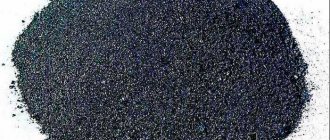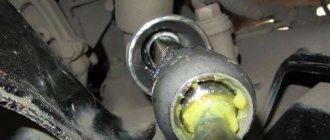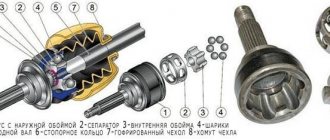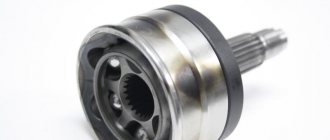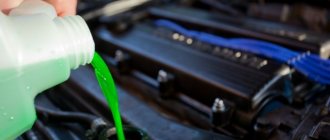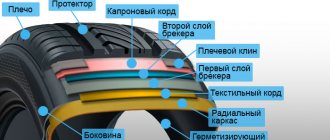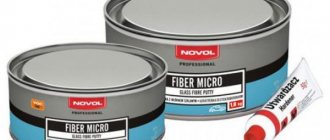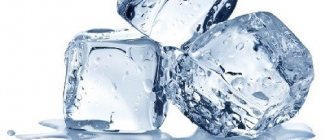Silicone Grease is a universal waterproof lubricant based on silicone and a thickener. Widely used among motorists, industry, and at home. Its main advantages are high adhesion (the ability to stick to a surface), as well as the ability do not enter into a chemical reaction with the surface. The lubricant is absolutely not afraid of water, and it can be used with rubber, plastic, leather, vinyl and other materials. Most often used by car owners silicone lubricants for rubber seals. In addition, it has a number of unique properties and advantages, which we will discuss further.
Silicone-based lubricants
Properties of silicone grease
Physically, silicone grease is a viscous translucent paste or liquid. Sold in tubes (tubes), jars or spray cans. Its parameters directly depend on the components from which it is created. However, absolutely all silicone lubricants have the following properties:
- High adhesion, which is characteristic not only of silicone lubricants, but also of silicones in general.
- Does not enter into a chemical reaction with the surface on which it is applied. That is, it does not have any harmful effects on it.
- Bioinertness (bacteria and microorganisms cannot live in a silicone environment).
- High dielectric and antistatic properties (the lubricant does not allow electric current to pass through).
- Hydrophobicity (excellently displaces water and protects metal from corrosion).
- Elasticity.
- Oxidation resistance.
- Excellent anti-friction properties.
- Environmentally friendly.
- Durability (long evaporation period).
- Non-flammability.
- Resistant to salt water, weak acids and alkalis.
- Lack of color and odor (in some cases, manufacturers add flavorings to the lubricant).
- Ability to transfer heat well.
- Safe for humans.
- Ability to maintain the properties listed above at extreme temperatures (from approximately -50°C to +200°C, although this range may vary for individual brands).
When applied to the surface, the lubricant forms a continuous polymer layer that protects it from moisture and other harmful external factors. Next, we’ll look at where you can use silicone grease based on its properties listed above.
Types of seals
You can select the optimal type of lubricant taking into account the operating conditions of the seals. The latter may be intended for:
- sealing fixed connections of industrial equipment units;
- seals of rotating elements;
- gaskets between surfaces connected by reciprocating movements.
In stationary parts, the gasket acts as a sealant, and in moving parts it must prevent wear caused by friction.
Seals must be elastic and easily take the shape of the mating parts, so they are made of soft elastomers. Under the influence of external factors, elastic elements begin to swell or crumble, harden, ceasing to perform their main functions. A seal treated with lubricant will reduce the heating of spare parts, prevent corrosion, and protect against the effects of temperature changes. Thanks to lubrication, the rubber will not lose its sealing qualities: it will not swell, deform or crack.
Application of silicone grease
Tire blackening
You can make rubber blacker using five methods (glycerin, shoe polish, soap, Coca-Cola and silicone). Compare the results and find out the best tire blackening agent with 100 black gloss effect. More details
How to lubricate car door locks
A good product should have a low coefficient of friction, retain its properties at low temperatures, resist corrosion, and be resistant to being washed off not only by water. More details
How to lubricate battery terminals
Lubricants for battery terminals can range from traditional “old-fashioned” ways to protect battery terminals from oxidation, to modern ones, with impurities that improve electrical conductivity. More details
Silicone-based lubricant is a universal product that can be used with the following materials - leather, vinyl, plastic, rubber. In addition, in some cases it can be applied to metal surfaces. The term silicone grease often means not only the lubricant itself, but also a protective coating and polish. This is due to the scope of its application. It is used not only for automotive parts, but also in everyday life. Let's look at these areas separately.
Application in car
With the help of silicone grease, the car owner can protect the rubber and plastic elements of the car from harmful factors, as well as give them a beautiful appearance. In particular, it is used to process:
Silicone grease for rubber seals
- rubber seals for doors, trunk, hood, windows, gas tank hatch and ventilation hatch;
- plastic elements of the interior, for example, the instrument panel;
- door hinges and locks;
- starter electric motors;
- wiper motors;
- seat guides, hatches, window lifts;
- rubber parts of wipers;
- sides of car tires;
- wheel rims;
- carpets in the car interior;
- rubber parts - stabilizer bushings, muffler mounting pads, cooling pipes, silent blocks, and so on;
- places where paint has chipped to prevent rust from appearing in the future;
- plastic bumpers, especially if scratches appear on them;
- front and rear seat anchorages, as well as seat belts.
Silicone car lubricant maintains the elasticity of rubber and plastic. Thanks to this, it can be used to eliminate the creaking of plastic friction pairs.
It can be used both to improve the functionality of individual parts of the car, and for decorative purposes. For example, restore the original appearance of old plastic panels or other surfaces.
Video instructions for using silicone lubricants
Using silicone grease in a car
Application in industry and everyday life
Also, universal silicone lubricants are widely used for household and industrial purposes . For example, they can be used in plastic rings and circular parts, in kinematic pairs made of metal and plastic, on ground joints of optical devices, rubber seal packages, plastic taps, and so on. Due to the fact that lubricants do not corrode rubber, they are widely used to protect rubber products from external destructive factors.
Before applying lubricant, it is advisable to clean the surfaces from dust and dirt, if any.
In everyday life, silicone grease is used in locks, hinges, and lightly loaded gearboxes. Some lovers of tourism and outdoor activities use it to cover the sealing rings of flashlights, waterproof watches, and seal mechanisms for which moisture ingress is critical (for example, in air guns). That is, the scope of use of silicone lubricants is extremely wide. In particular, they can be used in the following elements and mechanisms:
Application of silicone lubricants
- photographic equipment;
- surveying tools;
- electronic devices (including for protecting boards from moisture);
- rollers of refrigeration units and refrigeration mobile equipment;
- control cables;
- spinning reels;
- mechanisms of boats and jet skis.
Silicone grease is also widely used in everyday life for rubber seals on windows, doors, various household appliances, door hinges, and so on. We present for you some more interesting examples of the use of silicone grease that will certainly help you in life. The following can be treated with lubricant:
- Zippers. If you spray a tight fastener with lubricant, it will open and close much easier and work longer.
- Surfaces of bags, backpacks, cases and other items that may be exposed to rain.
- Surfaces of shoes to prevent them from getting wet.
- Surfaces of a camping tent.
- Scissor joints.
- Various rubber gaskets and seals.
However, do not go overboard with the use of silicone grease. Despite all its advantages, it is difficult to wipe it off if it is applied unsuccessfully or incorrectly. We'll talk about this later.
Where is it used and how to use it?
Silicone substances can be used in a car for various purposes. Below we will look at why the product is needed and how to properly lubricate parts.
It is important to remember that surfaces must be washed and dried before treatment.
For locks and doors
Locks (on the hood, doors, trunk lid, etc.) are more susceptible to negative environmental influences than others. The mechanisms are constantly affected by dust from the roads, snow, and rain, which leads to their faster wear and reduced service life. When water gets into the secret of the device during the cold season, it quickly freezes, resulting in difficulties when opening the door or other body components equipped with locks.
To prevent such problems, car owners need to treat components and devices from time to time. The use of a silicone-based product will prevent the lock and locking component from icing. But the use of thick or grease lubricants in this case will be impractical.
Lubricating the VAZ door lock
The best option is a spray. This type of product has excellent penetrating properties and flow parameters, which makes it possible for it to penetrate hard-to-reach places. The base of silicone lubricants is Teflon, through which an invisible layer appears on the treated parts for protection. This helps prevent the negative effects of rust and other oxidations on the mechanism. The protective film is resistant to salt water, alkaline solutions and mildly aggressive acids.
To prevent the formation of microcracks and rapid wear of the rubber sealing components of doors, it is necessary to treat the surfaces from time to time.
The seals that you lubricate with silicone will no longer squeak when driving on uneven roads. This allows you to improve the sealing of the car interior as a whole. The spray can be applied to moving components and surfaces, for example, hinges on doors or seating grooves along which windows slide down. If the car is equipped with a sunroof, its guides should also be lubricated with silicone. This will increase the service life of the bushings and protect them from the negative effects of corrosion.
To treat a lock, seals or other door part, you need to direct a stream of aerosol to the component to be lubricated and spray with the product. Then use a rag to remove traces of silicone drips.
For tires
The silicone product can be used to treat automobile rubber. This is especially true in the off-season, after changing shoes. Rubber is treated before long-term storage; it is necessary to lubricate the walls of the wheels with the product. Applying silicone helps retain moisture and prevent possible drying out of the tires. As a result, the service life is increased and rubber wear is prevented. For treatment, you can use any means - in the form of a gel, plastic, liquid or aerosol.
From the video of the Auto chemicals and auto cosmetics channel in Kyrgyzstan, you can learn about the correct use of silicone products.
For plastic
Plastic components of the car body also need to be treated to prevent the formation of extraneous noise. Over time, the door cards, control panel, and center console begin to creak in cars; in some cars, the bushings on the ceiling upholstery also need treatment. All working surfaces of contact and joints are lubricated with silicone. This not only prevents squeaking, but also improves the aesthetic appearance of the interior.
For suspension
The rubberized components of your car's chassis and suspension can be negatively affected by foreign elements (sand, dirt, moisture, etc.). Once they hit the suspension parts, they are exposed to abrasive materials, which leads to a decrease in service life and rapid wear of the components. In the cold season, experts recommend treating the suspension to protect it from aggressive salts and reagents that are sprinkled on roads. To do this, thoroughly lubricate the suspension elements, removing excess product with a rag. Currently, you can find special products on the market that were created to protect the steel components of the car body and chassis.
For control components
The use of lubricant is possible for processing the sealing rubberized components of control pedals, as well as lever devices of the machine. Silicone options are relevant for lubricating cables.
To process, it is necessary to blow the composition of the aerosol substance into the protective casing of the cable; for high quality lubrication, it is recommended to use a thin nozzle, which should be included with the can. Surface treatment will improve the sliding of the product in the casing, while the element will be reliably protected from the negative effects of dirt and moisture. After processing, the cable must be developed.
From the video of the Avtozvuk channel you can learn about the differences, as well as the parameters for selecting a silicone substance for a car.
How to remove silicone grease
Many people are interested in the question - how to wash off silicone grease ? The answer depends on its composition and manufacturer. If for some reason grease gets on glass, clothing or another surface in an undesirable place, then the first thing you should do is not try to wipe it off . You will only make things worse by making the grease stain bigger.
Read the composition of the lubricant and select a solvent that can neutralize it. We present for you several methods of neutralization:
Products for removing silicone grease
- If the composition is based on an acid base, then the easiest way to remove it is with vinegar. To do this, you need to take a 70% acetic acid solution and moisten the area of contamination with it. After this, wait about 30 minutes. Next, he should calmly wipe off with a dry cloth.
- If the lubricant is made with alcohol, it must also be neutralized with alcohol solutions. To do this, you can use medical, denatured or technical alcohol. As a last resort, vodka. Using a rag soaked in alcohol, scrub the silicone until it turns into balls.
- If the lubricant is based on amines, amides or oximes, then it can be wiped off with gasoline, white spirit or alcohol solvent. Using a dampened rag, wet the stained area and leave it for 30 minutes. After that, try to wipe it off. If it doesn’t work the first time, try moistening it again and leaving it for another 30…40 minutes. Then repeat the operation.
It is advisable to work with acetic acid, acetone and solvents in a respirator and rubber gloves!
Acetone is often used to remove silicone, but it is not suitable for all compounds. In addition, when working with it, be careful not to damage the paint of your car's body (especially for paint applied from a spray can).
In addition, to remove silicone grease, you can try using a glass cleaner (for example, “Mr. Muscle”), or a liquid containing ammonia or ethyl alcohol. Also in the auto chemical store you will find the so-called “anti-silicone”. However, it is not suitable for all types of lubricants. But the best option would be to go to a car wash and tell the employees what product you used. They will select the “chemistry” and remove the dirt with a suitable car shampoo.
Frost protection of door locks
Another problem that silicone-based lubricants successfully combat is freezing of door locking mechanisms. In frosty weather, the moisture inside the locking device crystallizes into ice. A frozen lock is almost impossible to open.
In order for the ice crystals to melt, you need to drive the car into a heated box and wait a while. If you need to open the door urgently, you have to use extreme methods. Obviously, pouring hot water from a kettle, heating with matches or the flame of a lighter causes damage to the paintwork. Injecting anti-freeze from windshield washer, WD-40 or alcohol negatively affects the lock mechanism.
All these problems can be avoided if you use a silicone spray lubricant in advance. It is enough to inject just a little aerosol into the lock to avoid freezing of the mechanism. The silicone will displace the water, which is the root of the problem.
Release form
The lubricant itself is produced in two physical states - gel and liquid. However, for ease of use, it is sold in different forms of packaging. In particular:
Forms of packaging of lubricants
- pastes;
- gel;
- liquids;
- aerosol.
Most often, motorists use aerosols . This is due to ease of use. However, the problem is that when the substance is applied, it ends up not only on the desired parts, but also on the surrounding surface, which is not always necessary. In addition, the aerosol sprays lubricant under high pressure, and it can get on clothes, interior elements, glass, and so on. Therefore, when choosing, pay attention not only to the brand and price, but also to the shape of the packaging .
Some manufacturers sell lubricant in cans with a tube. With its help, it will be easier for the car owner to lubricate hard-to-reach parts of the car. An additional benefit of the spray is that the lubricant not only protects the surface, but also improves its appearance.
Liquid lubricants are often sold in small canisters or jars with an applicator. The latter option is especially convenient for surface treatment. The liquid is absorbed into the foam rubber, the surface of which produces lubrication. This is especially true for treating rubber seals in winter . The advantage of liquid lubricants is their ability to flow into hard-to-reach places and protect internal elements and mechanisms. Therefore, we recommend that you always have such a product in your trunk, especially in winter. With its help, you will maintain the functionality of the lock in any frost.
Gels and pastes are sold in tubes or jars. They are applied using a rag, napkin or simply with your finger. The lubricant is harmless to the skin, so you don’t have to be afraid to touch it. As a rule, pastes or gels are used in cases where a significant layer of lubricant . It is often used to seal cracks and connectors.
Door locks
Often after washing a vehicle, owners are faced with the problem of jammed door locks. It is simply impossible to open the car, since the power of the electric motor is not enough to lift the button up. Moreover, this happens even when the washing was done in a warm room. Some of the water still ends up in hard-to-reach places, where it then turns into an ice crust.
But that is not all. Sometimes the keyhole itself freezes. And then it is impossible to open the door even with a key. How not to become a hostage to this situation? In order not to break the lock and door, and also to reduce the load on the electric motor, on the eve of winter it is worth treating the larva with silicone spray.
Comparison of different lubricants
Very often, when purchasing, people are interested in the question: which silicone lubricant is better ? There is, of course, no definite answer to this. After all, it all depends on the area of use, properties, brand and price. We have collected and systematized reviews of silicone lubricants , which are most common on the market in our country. We hope that the information provided will be useful and will help you navigate when choosing the best silicone lubricant for you personally.
Liqui Moly Silicon-Fett is a waterproof silicone lubricant produced in Germany. Excellent quality guaranteed! Operating temperature from -40°C to +200°C. Dropping temperature over +200°C. Resistant to hot and cold water and aging. Has a high lubricating effect and adhesion coefficient. The viscosity of silicone grease allows it to be used for lubrication of both small and large components and mechanisms. The product catalog number is 7655. The price of a 50 gram tube of this silicone lubricant will be approximately 370 rubles.
| Positive reviews | Negative reviews |
| The lubricant turned out to be worth the money, it perfectly lubricates plastic, metal, and glass guides. | This lubricant has one drawback: it cannot be used at temperatures above 30 degrees; it immediately begins to melt and leak. |
| High-quality lubricant, I liked it and is suitable for plastic, rubber and metal, heat-resistant. | Very expensive for 50 grams. |
Molykote 33 Medium - produced in Belgium. It is distinguished by its quality and excellent performance characteristics. It is frost and heat resistant. In particular, the operating temperature range is from -73°C to +204°C. Silicone grease has universal viscosity, which allows it to be used in a wide variety of components and mechanisms. Catalog number - 888880033M0100. A package weighing 100 grams costs approximately 2380 rubles ($33).
| Positive reviews | Negative reviews |
| Excellent lubrication feel. the torpedo creaked. I liked that the creaking immediately disappeared . | Ordinary silicone, why pay that kind of money? I didn't like it. |
| Although Molykote is an expensive company, they know their stuff. Lubricant can be used not only in the car. |
XADO Verylube is an excellent high-temperature silicone lubricant , which is widely used by motorists in the post-Soviet space (produced in Ukraine). Resistant to cold and hot water. Operates at temperatures from -62°C to +250°C. Protects metals from corrosion, displaces dust and moisture. Eliminates the creaking of plastic panels, rubber belts and restores the operation of locks. Well restores the elasticity of seals and restores elasticity to oil seals. Very lube lubricant prevents car doors and hatches from freezing. Restores the color of rubber on car wheels and renews the appearance of vinyl upholstery. The cost of silicone spray lubricant in a cylinder weighing 150 grams is 180-200 rubles (XADO order number XB40205).
| Positive reviews | Negative reviews |
| I always apply XADO Very lube silicone to seals before winter. Before this I tried all sorts of things - both expensive and cheap. All are equally effective. I chose this one because the price suits me, and the smell allows me to treat plastic rubbing parts of the interior (killed all the crickets), and also used it as a contact cleaner in the socket under the towbar. | Their quality has dropped a lot lately. It’s unclear what they’re doing. |
| Good lubrication. Inexpensive and high quality. you can smear anything. I even used it at home. I've been using it for 2 years now. | Expensive for such crap. |
StepUp SP5539 is a heat-resistant silicone grease from the USA, works at temperatures from -50°C to +220°C. Often the cans are equipped with a tube for working in hard-to-reach places. It has a liquid consistency, which allows it to be used for lubricating small components and mechanisms. It is a universal protection for metal, rubber and plastic from moisture. Often used to treat rubber seals on car doors, windows and trunks. This product also effectively protects wiring and battery terminals from corrosion. The price of water-repellent heat-resistant lubricant STEP UP SP5539 spray bottle with a volume of 284 grams is 6...7 $.
| Positive reviews | Negative reviews |
| I liked the treatment because after application, a thin water-repellent layer is formed on the treated surfaces, which protects against freezing, the adhesion of dirt and dust, and the rubber seals do not stick together. Before the start of last winter, I processed everything myself. | Not detected |
| Good lube! I use lubricant in winter for door rubber seals and wipers. I find a free, warm underground parking lot (for example, Raikin Plaza), raise the wipers, dry or wipe them and spray silicone on the rubber and fastenings on all sides. You need to give it some time for impregnation. As a result, the ice does not freeze and the wipers work like in summer. |
Silicot is water-repellent silicone grease (Russia). Its operating temperature ranges from -50°С…+230°С. Can be used in a variety of areas (when working with wood, plastic, rubber, metal). The viscosity of silicone grease is medium, more suitable for use on large parts and surfaces. Features good adhesion. Designed for lubricating lock mechanisms, guides, rubber seals, fans, etc., therefore it is universal. The cost of a tube weighing 30 grams is about 3...4 $ (order number VMPAUTO 2301).
| Positive reviews | Negative reviews |
| I lubricated everything from plastic gears in children's toys to rubber seals on windows, as well as computer coolers, door hinges, car battery terminal blocks, and even a wooden drawer. | High price for regular silicone, not as versatile as advertised - miracles don't happen. |
| It will be useful in every home. Where it creaks, where it doesn’t turn as it should, it will work everywhere. There is no smell and you can’t wash it off with water. The tube contains 30 grams, I had enough for everything and still have some left over. I bought it for 250 rubles. In general, you can find around 150-200. I did not find. |
Oks 1110 is a food grade silicone grease that can be used in components of kitchen appliances, assemblies with plastic gears , including in cars. Softens silicone-based plastics, such as silicone rubber. Provides long-term stability without drying out, hardening or bleeding, and is resistant to operating media such as cold and hot water and acetone, ethanol, ethylene glycol. It should not be used on sliding areas exposed to pure oxygen. Transparent multi-silicone grease OKS 1110 is produced in Germany. Use temperature -40°С…+200°С, penetration class NLGI 3 and viscosity 9,500 mm2/s. The price of a tube weighing 10 grams is 740-800 rubles (10-11 $).
| Positive reviews | Negative reviews |
| I was trying to grease the food processor once when it squeaked. It really helped. Don't buy a lot, a small tube is enough. | Not detected. |
| I smeared the caliper guide with this lubricant, since it is a complete analogue of Molykote 111. So far everything is fine. |
MS Sport is a domestically produced silicone lubricant, which is characterized by a high content of silicone with fluoroplastic, which allows it to be used in pairs, one of the elements of which is metal, and the second can be: rubber, plastic, leather or also metal. Temperature operating range - -50°С…+230°С. Its characteristics make it possible to use it both for household purposes and for lubricating car parts. Since the degree of penetration (penetration) of the grease is 220-250 (it is semi-solid), this allows it to be used in high-speed bearings and other lightly loaded sliding and rolling friction units. It protects well from water, dirt, and corrosion because it has water-repellent properties. Does not conduct electric current. It does not wash off, eliminates squeaking, and the durable frost-thermo-moisture-resistant film prevents corrosion and freezing. The price of a 400 gram package is $16…20 (VMPAUTO 2201), a 900 gram package is $35…40.
| Positive reviews | Negative reviews |
| The lubricant lived up to its name and price. The caliper was lubricated in all rubber-metal rubbing areas and safely ran 20 thousand km before the car was sold. An inspection of the caliper a year and a half later showed that the lubricant had turned slightly black at the points of contact with the rubber. It is not very suitable for lubricating door seals; it is difficult to apply in a thin layer. | In my opinion this is all bullshit |
| Bottom line: the choice is normal. I used a similar lubricant on the car, and came to the conclusion that silicone lubricants on the caliper guides are correct. There are no problems, and, most importantly, the lubricant remains in place when water gets in. |
HI-GEAR HG5501 is a high-quality water-repellent silicone grease from the USA. It has low viscosity, due to which it has high penetrating ability. It can be used to process lock cylinders, door hinges and other mechanisms. The cost of a 284 gram spray bottle is about $5…7.
| Positive reviews | Negative reviews |
| An irreplaceable thing after washing in the winter, I always lubricate the seals and there are no problems with opening and closing the doors. I watch others with a smile when they cannot open frozen doors after washing in the cold winter)) | Not detected. |
| HG5501 lubricant is easy to use and has an immediate effect. The clicking noise coming from the generator really helped, the last time I sprayed it was in the fall |
Eltrans-N is a domestic waterproof and heat-resistant silicone grease . It has good performance properties and also improves the appearance of the surface. In addition, the lubricant contains flavorings. So it is often used to eliminate crickets on a car dashboard and give plastic parts and leatherette areas an updated look. Operating temperature from -40°C to +200°C. The viscosity of the lubricant is average. Therefore, in essence it is universal. A bottle weighing 70 grams costs $1...2, and a 210 ml aerosol of silicone-based lubricant (EL050201) will cost a little more.
| Positive reviews | Negative reviews |
| The lubricant is like a lubricant, the tube is filled well, squeezes out easily, closes tightly, and is inexpensive. | Poorly prevents freezing of rubber parts |
| The nozzle is equipped with a thin blue tube, fits into any gap and sprays the contents perfectly. The consumption is very economical. I also use this lubricant to treat braid before fishing in cold weather. Helps great. Odorless lubricant. Copes with its functions at 5+ | Personally, I found it too liquid; when used, the lubricant simply flowed out from under the ball applicator, leaving smudges on the bottle and drops on the floor. I will also assume that it contains more water than silicone or paraffin or Vaseline. I think this purchase was unsuccessful. |
This is not a complete list of silicone lubricants presented on the domestic market. However, we have selected for you those that have proven themselves best. Since the creation of the 2017 review, prices have not changed much, only some of the lubricants at the end of 2021 have risen in price by 20%.
Conclusion
As you can see, silicone grease is a universal remedy that can help you out in many situations (to restore elasticity, eliminate squeaking or protect against water). Therefore, we advise all motorists to have silicone lubricant in the trunk , which will certainly help you at the right moment. Treat plastic, rubber or hinged metal parts of your car. This will not only make them more beautiful, but also increase their service life. You can buy silicone grease for a very reasonable price, saving on possible more expensive repairs.
Varieties and advantages
An important advantage of this lubricant is that the silicone-based product can be used not only for the car. Its use is also allowed for other purposes, for example, for treating a treadmill, lubricating door seals, etc.
What other advantages do silicone products have:
- the product can be used in almost any operating temperature range; in severe frost the substance does not lose its fluidity characteristics;
- the substance is not classified as flammable, so sparks or fire entering the product will not affect safety in any way;
- lubricant is not considered a conductor, therefore no current can pass through it, the product belongs to the category of insulators;
- effective protection of treated components and surfaces from corrosion and destruction;
- the lubricant adheres well to plastic, steel, glass and polymer parts of the machine;
- the composition of the substance is completely safe for human health, silicone does not contribute to the manifestation of allergic reactions on the skin and mucous membranes;
- As a result of processing, silicone lubricant for cars does not loosen rubber components and does not destroy plastic parts, forming a protective layer on them;
- the film resulting from the treatment of spare parts with silicone is waterproof.
Liquid
Liquid silicone is used by applying the substance to a paper napkin to subsequently lubricate the work surface. According to reviews, this type of product is considered the most convenient for working with small-sized parts. The use of a liquid substance pollutes a minimum of spare parts if used carefully. Thanks to its fluid properties, the lubricant easily gets into hard-to-reach places.
User bushkraftell in his video talked about what you need to know about using the consumable.
Aerosol
This type of substance enters the domestic market in the form of a spray in cans. The use of the product may contaminate parts that are located near the surfaces being treated. The main disadvantage of this version of the substance is the presence of greasy stains on parts in the area of use.
Thick
If necessary, the buyer can purchase a consistent substance in the form of a gel. During operation, this product should be applied to a napkin, then wipe the surface that needs lubrication with it. Due to the fact that the gel is too thick, it is not advisable to use it in places that are difficult to reach. This minus is considered the main one. Using thick lubricant will not allow you to effectively treat door locks and hinges on the car.
User Mihalych Style made a video in which he showed what lubricant is used for and how to properly treat spare parts with the substance.
Plastic
This lubricant is sold on the Russian market in the form of a gel or paste. As in the case of a thick substance, the use of a plastic product is impractical on hard-to-reach surfaces. Because of this, the scope of application of the product is limited.
